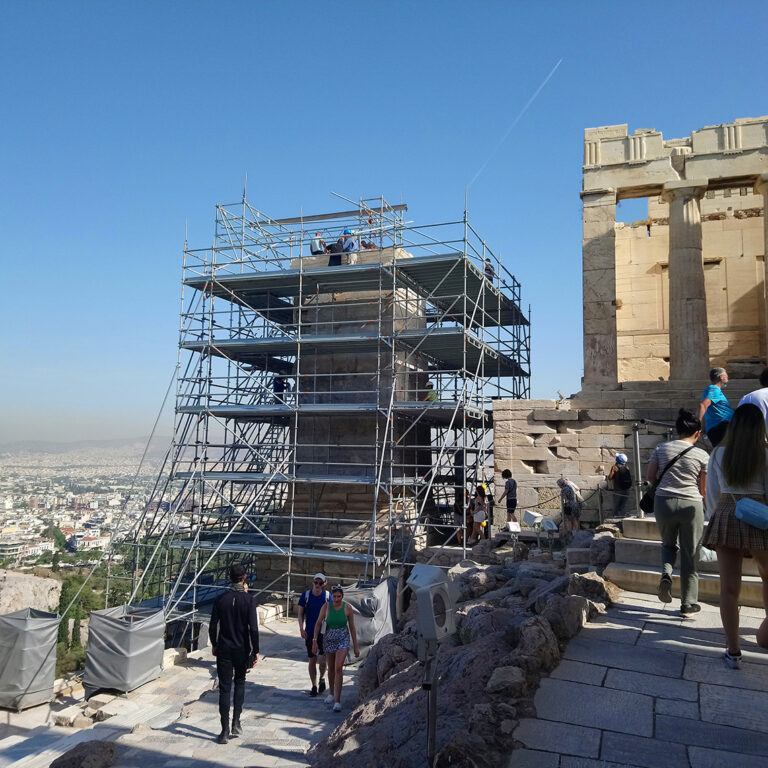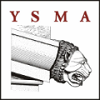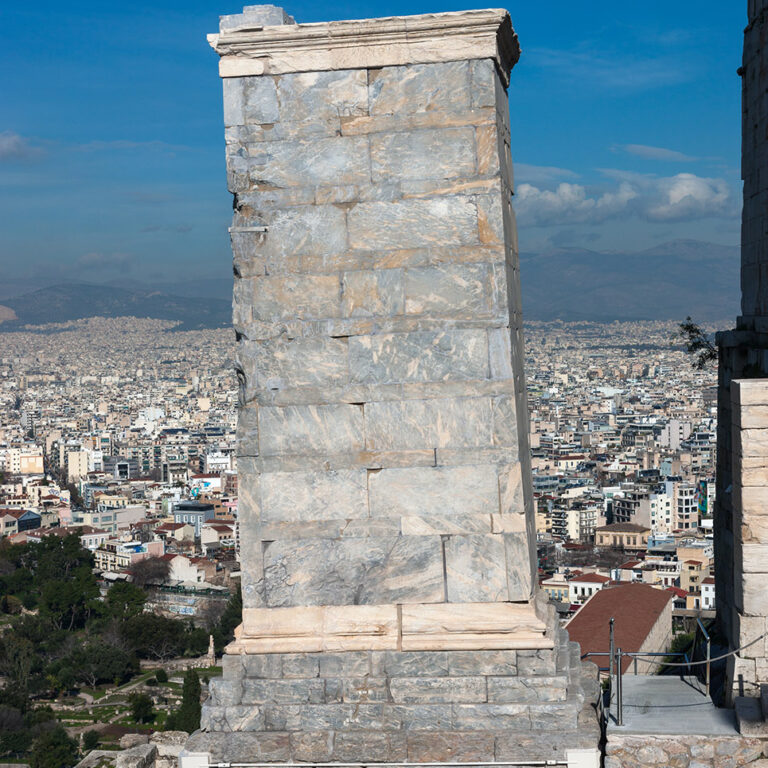
In early 2021, YSMA undertook to investigate the causes of the pedestal’s deformations in order to submit a proposal for their treatment, followed by the necessary conservation interventions in its surface. The undertaking was coordinated by a group of supervisors consisting of D. Michalopoulou, K. Karanasos and K. Fratzikinaki. Initially, the current preservation state was documented with the aid of a photogrammetric survey (study by D. Mavromati and V. Kyparissi). At the same time, in order to tackle the causes of soil erosion, rainwater drainage was arranged and the space surrounding the pedestal to the west was waterproofed. A scaffolding was installed and the monument’s pathology was then recorded.
After the initial recordings, it became evident that the course of action would be aimed, on the one hand, at the pedestal’s surface through the necessary conservation works and, on the other, at investigation in order to draw up a structural study that would deal with the monument’s deformation.
The first stage involved conservation works. Special emphasis was placed on the west side of the monument that had suffered damages due to the impact of projectiles. During earlier interventions, lacunae in the Hymettian marble blocks had been filled with concrete. It was necessary to replace the corroded connectors of the 1914 intervention with new elements made of titanium while, concurrently, unstable fragments in stone blocks of the shaft and crown were consolidated with titanium rods. The conservation intervention in the pedestal of Agrippa was brought to completion at the end of 2023.
Simultaneously, in August 2021, the geophysical survey of the monument and the subsoil by means of a ground-penetrating radar system (GPR) and electrical resistivity tomography (ERT) was assigned to external collaborators. The investigation aimed to determine the internal structure of the pedestal, the stratification and tectonics of the site and the recording of possible failures. Then followed geotechnical survey for the examination of the stratification and the geotechnical features of the deposits as well as the monument’s rocky substratum.
Based on the evidence obtained, YSMA assigned the elaboration of a structural study to an outside collaborator. In accordance with this study, in 2023, the following measures were carried out:
- A tie system was fixed to the second layer of the foundation below the crepis in order to hold together the parts into which the pedestal’s foundation tends to split. The tie system is composed of 4 corner metal elements made of stainless steel and a pair of tie-rods along each face.
- Grouting and repointing for the reinforcement of the foundation and the first three layers of the stereobate.
- Installation of slightly pre-stressed stainless-steel rods in order to keep in place the opposite sides of the stereobate at the level of the external tie system.
- Application of grout composed of cement-based mortar in order to create a thin barrier layer at the base of the foundation.
- Removal and replacement of certain stone blocks of the north side of the foundation.
Furthermore, the conditions and the adequacy of the pedestal’s foundation were assessed. In the foreseeable future, an instrumental monitoring system will be set up and the improvement of the behaviour of the rock’s foundation soil will be studied.


